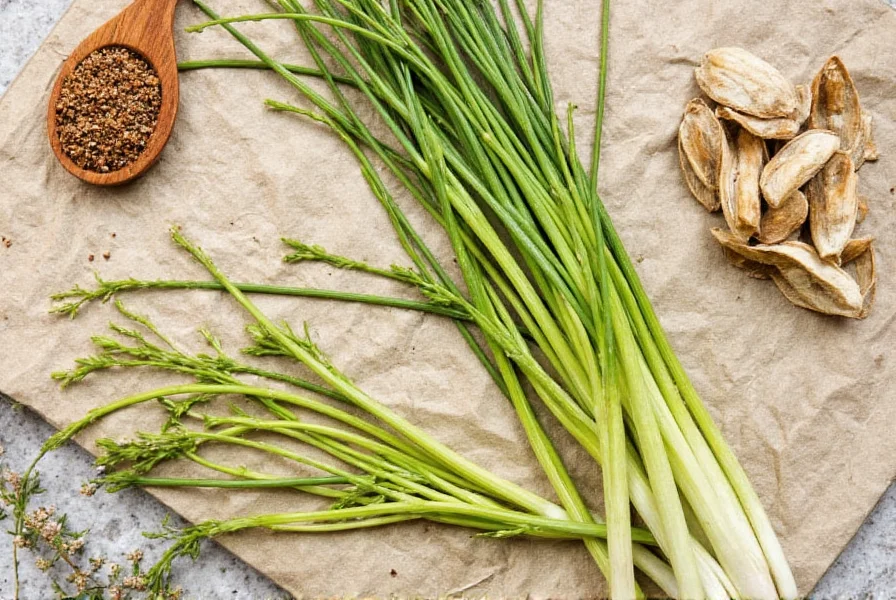Table of Contents
Smart Storage Tips for Dried Scallions
Dried scallions require proper storage to maintain flavor and freshness. Follow these key guidelines:
- Airtight Containers Only: Use glass jars or resealable plastic bags with desiccant packets to absorb moisture.
- Keep Cool and Dark: Store in a pantry or dark cabinet away from light and heat sources.
- Avoid Humidity: Keep away from stoves, sinks, and windows to prevent moisture exposure.
- Add Rice Grains: Place a few uncooked white rice grains in the container to absorb excess moisture and prevent clumping.
- Label and Date: Mark containers with the date of storage to track freshness.
| Storage Method | Shelf Life | Flavor Retention | Notes |
|---|---|---|---|
| Plastic bag (sealed) | 6–8 months | Moderate | Avoid high humidity; may crush easily |
| Glass jar (with lid) | 1 year+ | High | Best for long-term storage |
| Pantry (loose container) | 3–4 months | Low | Rapid flavor loss due to exposure |
| Vacuum sealed | Up to 2 years | Very High | Ideal for bulk storage |
Creative Ways to Use Dried Scallions
Dried scallions offer versatile applications in cooking. Here are effective usage methods:
- Popcorn Topping: Sprinkle 1 teaspoon over popcorn for savory flavor enhancement.
- Ramen Upgrade: Add 2–3 teaspoons to instant ramen for improved taste profile.
- Seasoned Salt: Mix with sea salt in a 1:4 ratio (scallions:salt) for versatile seasoning.
- Scrambled Eggs: Stir 1 tablespoon into eggs before cooking for aromatic flavor.
- Dumpling Fillings: Incorporate into dumpling fillings or sprinkle on top before cooking.
- Soup Seasoning: Enhance broth-based soups like miso or chicken noodle with a spoonful.
- Seasoning Blends: Combine with garlic powder, sesame seeds, and soy sauce granules for custom blends.
- Butter Spread: Mix with softened butter for quick scallion butter.
- Rice Revival: Sprinkle over fried rice or microwave rice packs for easy upgrade.
- Salad Topping: Add texture to grain salads or avocado toast.
| Use Case | Quantity per Serving | Best For |
|---|---|---|
| Popcorn topping | 1 tsp | Casual snacks, movie nights |
| Instant ramen | 2–3 tsp | Quick meals, solo dinners |
| Scrambled eggs | 1 tbsp | Breakfast, busy mornings |
| Seasoned salt | 1:4 ratio (scallions:salt) | Snacks, grilling, meat seasoning |
| Grain salads | 1 tbsp | Lunch prep, light meals |
Buying Guide for Dried Scallions
When purchasing dried scallions, consider these quality indicators:
- Color: Bright green or pale green hues indicate better quality and freshness.
- Texture: Dry but not overly brittle; should crumble easily without dusting.
- Packaging: Resealable pouches or jars help maintain freshness longer than open packages.
- Ingredients: 100% dried scallions with no additives or preservatives.
Frequently Asked Questions
- How long do dried scallions last?
- Properly stored in an airtight container away from light and moisture, dried scallions maintain peak flavor for 1–2 years. Glass jars extend shelf life to 1+ years, while vacuum-sealed options can last up to 2 years.
- What’s the conversion ratio between fresh and dried scallions?
- Use a 3:1 ratio—3 parts fresh scallions equals 1 part dried. For example, if a recipe calls for 3 tablespoons fresh, use 1 tablespoon dried. Their concentrated flavor means a little goes a long way.
- Do I need to rehydrate dried scallions before using them?
- No. They work best added directly to dishes with liquid (soups, ramen, sauces) where they’ll rehydrate naturally. For dry applications like popcorn or seasoned salt, skip rehydration—they’ll absorb moisture from other ingredients.
- Are dried scallions as nutritious as fresh ones?
- They lose some water-soluble vitamins during drying, but retain most antioxidants and sulfur compounds that give scallions their health benefits. For maximum nutrition, pair them with fresh vegetables in dishes like grain salads.
- Why are my dried scallions clumping together?
- Humidity is the culprit. Fix it by adding 5–6 uncooked rice grains to your container—they’ll absorb excess moisture. Always store in a cool, dark place away from steam sources like sinks or stoves.
- Can I make my own dried scallions at home?
- Yes. Chop fresh scallions thinly, spread on a baking sheet, and dehydrate at 140°F (60°C) for 2–3 hours until brittle. Store in a glass jar with a desiccant packet. The white roots contain intense flavor and should be included.











 浙公网安备
33010002000092号
浙公网安备
33010002000092号 浙B2-20120091-4
浙B2-20120091-4